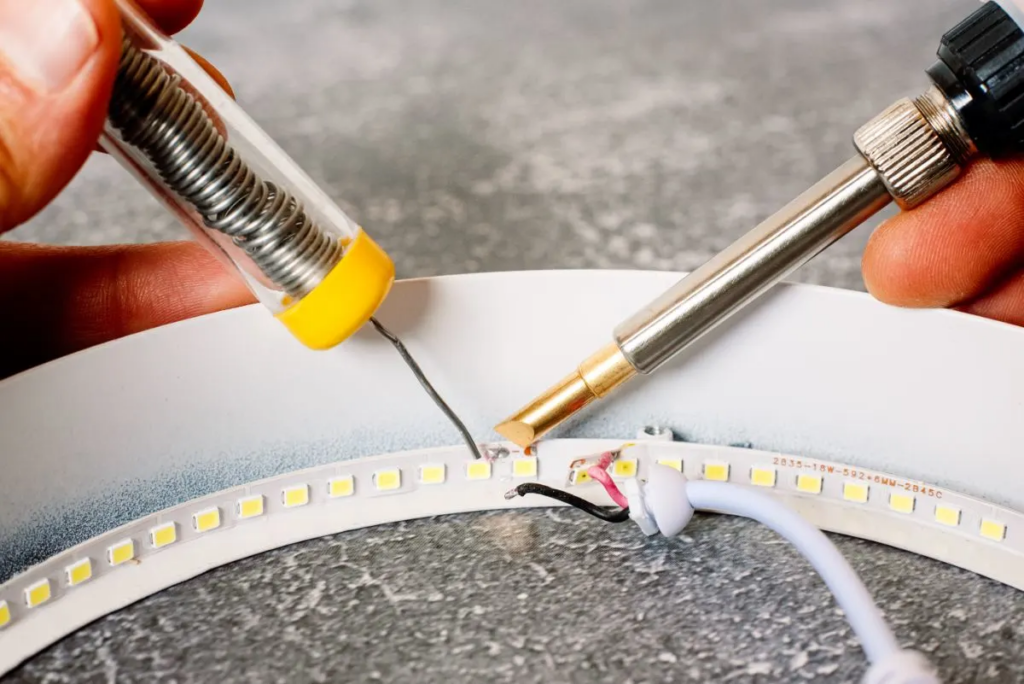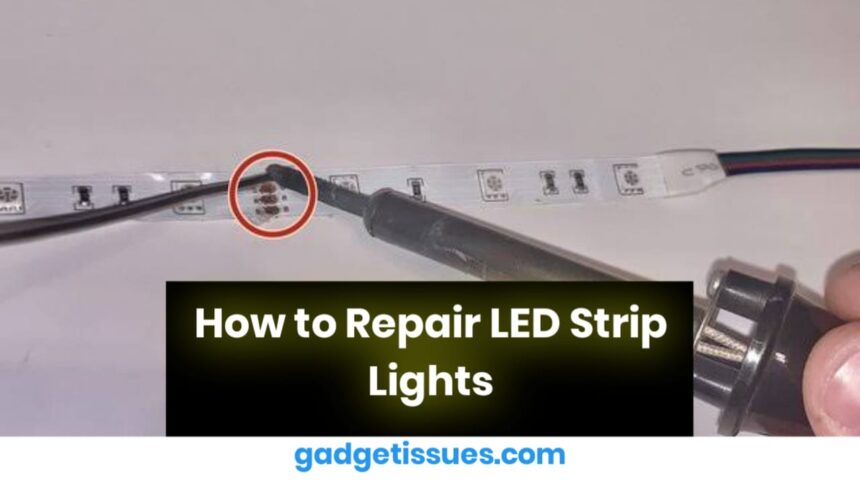LED strip lights are a popular and affordable way to light up rooms, shelves, and workspaces. But like all electronics, they can fail—sections may stop working, flicker, or lose brightness. The good news is that most issues are easy to fix with a bit of troubleshooting. Here’s how to repair common LED strip light problems.
1. Identify the Problem
Start by checking whether the entire strip or just a section has stopped working. Common issues include:
- One or more segments not lighting up
- Flickering or dim light output
- Burned or broken connectors
- Power supply failure
Use a multimeter to test voltage along the strip if available. This can help locate where power drops off.
2. Check the Power Supply and Connections
A failing power adapter is often the root cause of LED strip problems. Make sure your adapter matches the voltage and current requirements of the LED strip. For example, most 5V or 12V strips require a compatible supply with sufficient amps.

Also, inspect the connectors and wires for any visible damage or loose connections. Unplug and re-plug the strip to ensure secure contact.
3. Repair or Replace Damaged Sections
LED strip lights are designed in segments (usually 3 LEDs per group). If a segment stops working, you can cut it out and reconnect the working ends:
- Turn off power before cutting
- Cut along the marked copper pads using scissors
- Strip the ends and reconnect using solder
- Match the polarity (+ and -) when reattaching sections
For long-term durability, apply heat shrink tubing or electrical tape to insulate the joints.
4. Fix Flickering or Uneven Brightness
Flickering lights often indicate:
- An underpowered or failing power supply
- Voltage drop in long strips
- Poor-quality solder joints
Conclusion
Repairing LED strip lights is often straightforward once you identify the root cause. Start by checking the power supply and connectors, then move on to segment repair or replacements. Whether you’re fixing flickering lights or restoring a dead section, basic tools like scissors, solder, and a multimeter go a long way.
Also Read : How to Safely Tape Over a Cracked Smartphone Screen or Glass







